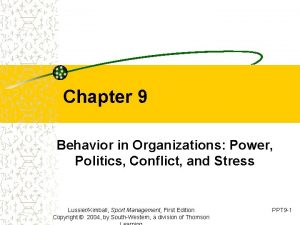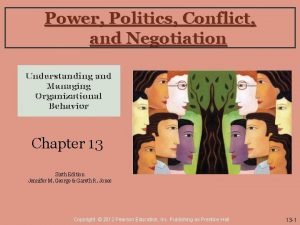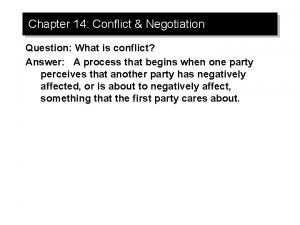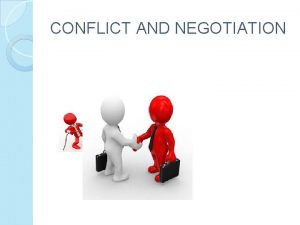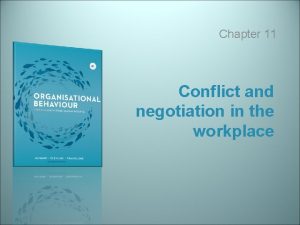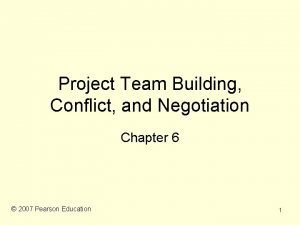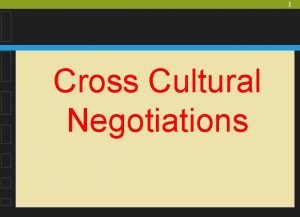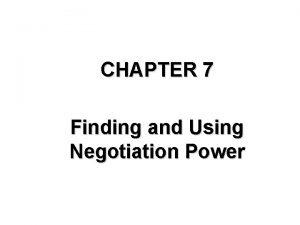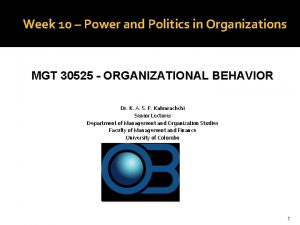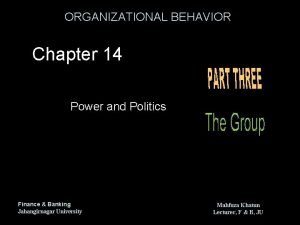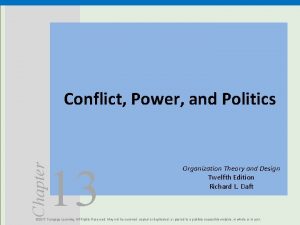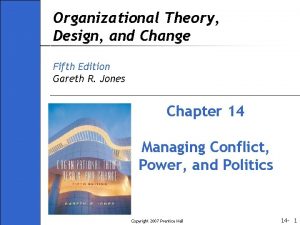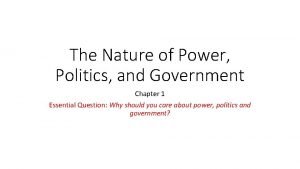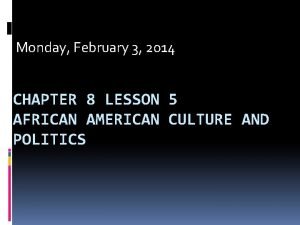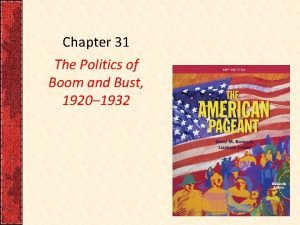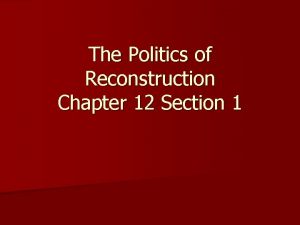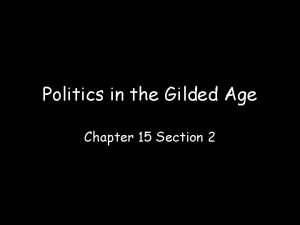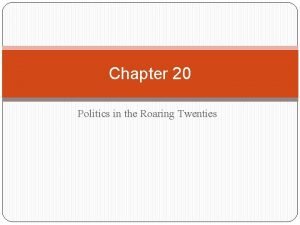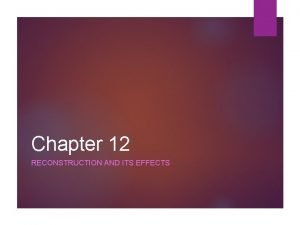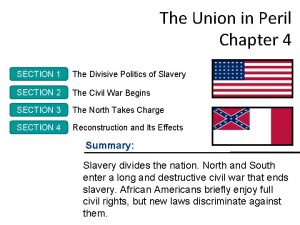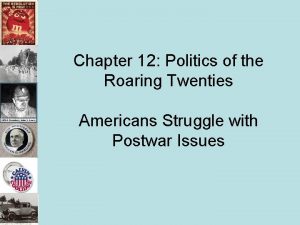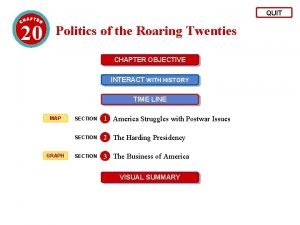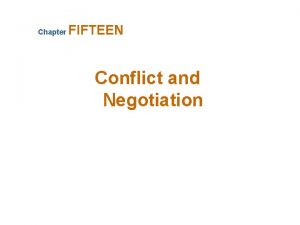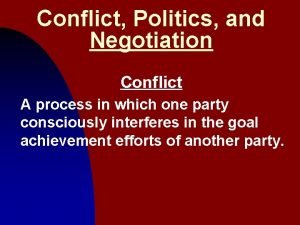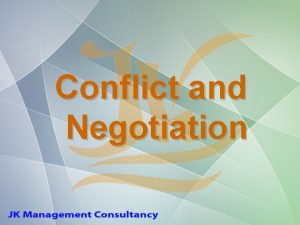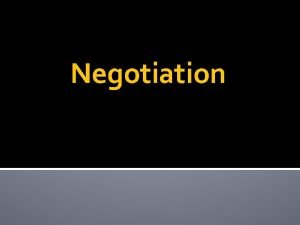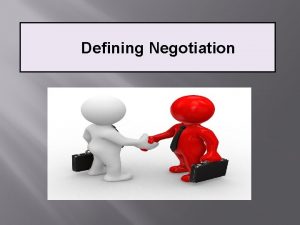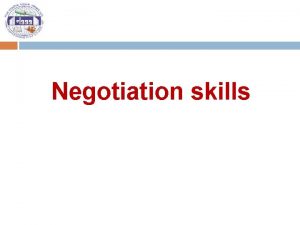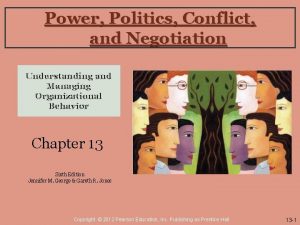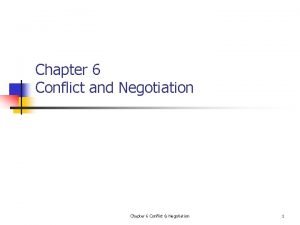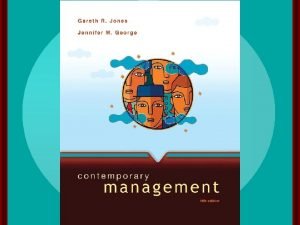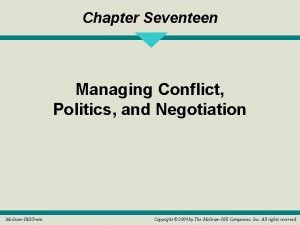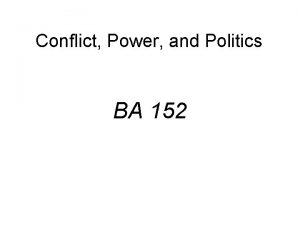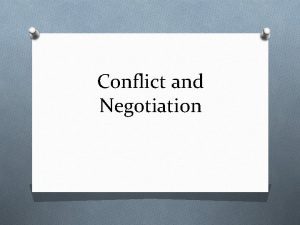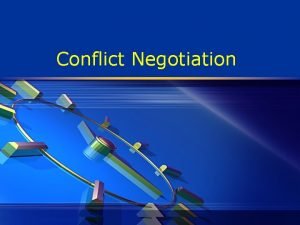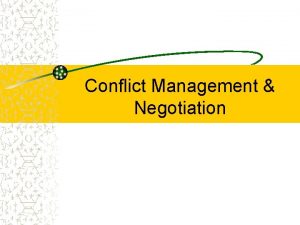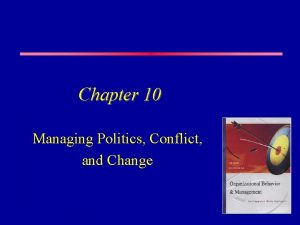Chapter 12 Conflict Negotiation Power and Politics Michael





























- Slides: 29

Chapter 12 Conflict, Negotiation, Power, and Politics Michael A. Hitt C. Chet Miller Adrienne Colella Slides by Ralph R. Braithwaite 12 -1

Green Conflict Do you think companies are becoming more Michael Dell aware of the impact of their businesses on the environment? Can the goals of environmental and conservation groups be compatible with the goals of businesses? Why or why not? What are the upside gains for businesses that become more environmentally friendly? What are the consequences if they don’t? Exploring Behavior in Action 12 -2

Knowledge Objectives 1. Explain how conflict can be either functional or 2. 3. 4. 5. 6. 7. 8. dysfunctional, and distinguish among various types of conflict. Discuss common causes of conflict. Describe conflict escalation and the various outcomes of conflict. Explain how people respond to conflict and under what circumstances each type of response is best. Understand how organizations can manage conflict. Describe the basic negotiation process, strategies, and tactics. Explain why organizations must have power to function, and discuss how people gain power in organizations. Define organizational politics and the tactics used to carry out political behavior. 12 -3

The Nature of Conflict Dysfunctional Conflict Functional Conflict 12 -4

Effects of Conflict Effects on Individuals Effects on Behavior Effects on Interpersonal Relationships Adapted from Exhibit 12 -1: Effects of Conflict 12 -5

Functional Consequences Improved Problem Solving Facilitation of Change Stimulation of Creativity Potential Benefits of Conflict Enhanced Morale and Cohesion Spontaneity in Communication 12 -6

Types of Conflict Personal Conflict Substantive Conflict Procedural Conflict 12 -7

Effects of Types of Conflict on Task Performance High Substantive Conflict Task Performance Personal Conflict Procedural Conflict Low Degree of Conflict High Adapted from Exhibit 12 -2: The Effects of Different Types of Conflict on Task Performance 12 -8

Causes of Conflict Structural Factors Communication History Conflict Individual Characteristics Cognitive Factors 12 -9

Un-United What were some of the conflicts that United was experiencing even before September 11, 2001? What could Jim Goodwin, United’s CEO, have done differently? How would you characterize the relationship between union and management? What could each side have done to more effectively deal with the issues the organization was experiencing? Do you think United will survive? Experiencing Strategic OB 12 -10

Rosie vs. Donald What was your reaction to the escalating conflict between Rosie O’Donnell and Donald Trump? Was anything ever resolved between the two of them? Do you agree that “each of the parties harmed the other but did equal harm to themselves”? What has been your experience with escalating conflict? Experiencing Strategic OB 12 -11

Conflict Escalation 12 -12

High Conflict Outcomes Degree of Satisfaction of Party A’s Concern Win-Lose Win-Win Compromise Lose-Lose Low Lose-Win Degree of Satisfaction of Party B’s Concern Adapted from Exhibit 12 -3: Possible Conflict Outcomes High 12 -13

Responses to Conflict High Assertiveness Competing Compromising Avoiding Low Collaborating Accommodating Cooperativeness High 12 -14

Negotiation A process by which parties with different preferences and interests attempt to agree on a solution. 12 -15

Negotiation Strategies Distributive Bargaining Integrative Bargaining 12 -16

Negotiation Tactics Distributive Tactics Integrative Tactics Attitudinal Structuring Tactics Adapted from Exhibit 12 -4: Negotiation Tactics 12 -17

The Negotiation Process BATNA Preparation Determining the Negotiation Process Closing the Deal Negotiating the Agreement 12 -18

Costly Conflict Resolution Managerial Advice Salary negotiations – classic case of conflict • • • Do your homework Determine your BATNA Know what salary you want Never make vague counteroffers Avoid a hard stand – winner’s remorse Be realistic Be polite Never inflate past salary or experience Calculate benefits as part of the package Don’t play “hard to get” when little bargaining power 12 -19

Power The ability of those who hold it to achieve outcomes they desire. The ability of one person to get another person to do something that he or she would not normally do. Persuasion is often the exercise of power. 12 -20

Coercive Power Legitimate Power Reward Power Bases of Power Referent Power Expert Power 12 -21

An Example of Power • Eisner had a great deal of legitimate power. • Eisner lavished attention on board Michael Eisner • • • members, important investors, Disney family members, and others. Eisner limited access to and controlled key information. Eisner divided those who might oppose him and made himself indispensable. Eisner restricted the power of others. Did he use his power for the good of the organization? 12 -22

Strategic Contingencies Model People and organizational units gain power by being able to address the major problems and issues faced by the organization. • People need to identify strategic contingencies faced by an • organization and gain control over them Anyone who can help reduce uncertainties faced by the organization will gain power • People who are irreplaceable have power • Power can result from controlling the decision process, either by setting parameters on the types of solutions that are acceptable or by controlling the range of alternatives to be considered 12 -23

Organizational Politics • Behavior that is directed toward furthering one’s own • • • self-interests without concern for the interests or wellbeing of others Goal of political behavior is to exert influence on others Most managers and associates (70%) feel they have been harmed by political behavior of others Fewer managers and associates (45%) feel they have gained power and influence by acting politically 12 -24

Levels of Politics Individual Group An associate who uses politics to suit his or her best interests – taking sole credit for a group project for example Often in the form of coalitions – a group whose members act together to actively pursue a common interest 12 -25

Rational Persuasion Pressure Consultation Personal Appeal Political Tactics Legitimizing Coalition Ingratiation Inspirational Appeal Exchange 12 -26

Political Skill The ability to effectively understand others at work and to use this knowledge to enhance one’s own objectives. People with strong political skills: • Find it easy to imagine themselves in others’ positions • • or see their points of view Can understand situations, determine the best response and adjust their behavior accordingly Develop large networks and are known by many people Easily gain cooperation of others Make others feel at ease 12 -27

The Strategic Lens 1. Can you describe a situation in which conflict was functional (i. e. , had positive outcomes)? If so, in what ways was the conflict functional? 2. A strategic leader must use power in many actions that he or she takes. In what ways can he or she exercise this power to achieve positive outcomes? 3. How can knowledge of conflict, negotiations, power, and politics in organizations help you be more successful in your career? Please be specific. 12 -28

Questions 12 -29
 Power politics and conflict in organizations
Power politics and conflict in organizations Conflict power and politics
Conflict power and politics Integrative vs distributive negotiation
Integrative vs distributive negotiation Philosophy, politics and economics michael munger
Philosophy, politics and economics michael munger The conflict process begins:
The conflict process begins: Conflict and negotiation in the workplace
Conflict and negotiation in the workplace Negotiation team building
Negotiation team building Conflict management and negotiation skills
Conflict management and negotiation skills Negotiation conflict styles by calum coburn
Negotiation conflict styles by calum coburn Finding and using negotiation power
Finding and using negotiation power Power and politics in organizations
Power and politics in organizations Contrasting leadership and power
Contrasting leadership and power Power and politics organization theory
Power and politics organization theory Power and politics
Power and politics The nature of power politics and government
The nature of power politics and government Power in politics definition
Power in politics definition Power traiangle
Power traiangle Chapter 8 lesson 5 african american culture and politics
Chapter 8 lesson 5 african american culture and politics Chapter 31 the politics of boom and bust
Chapter 31 the politics of boom and bust Internal vs external conflict
Internal vs external conflict What is conflict and conflict resolution?
What is conflict and conflict resolution? Internal and external conflict
Internal and external conflict Chapter 12 section 1 the politics of reconstruction
Chapter 12 section 1 the politics of reconstruction Pendleton civil service act
Pendleton civil service act Chapter 20 politics of the roaring twenties
Chapter 20 politics of the roaring twenties Chapter 12 reconstruction and its effects
Chapter 12 reconstruction and its effects Chapter 4 section 1 the divisive politics of slavery
Chapter 4 section 1 the divisive politics of slavery Chapter 15 section 3 politics in the gilded age
Chapter 15 section 3 politics in the gilded age Politics of the roaring twenties chapter 12
Politics of the roaring twenties chapter 12 Politics of the roaring twenties
Politics of the roaring twenties
